This article was medically reviewed by Luba Lee, FNP-BC, MS. Luba Lee, FNP-BC is a Board-Certified Family Nurse Practitioner (FNP) and educator in Tennessee with over a decade of clinical experience. Luba has certifications in Pediatric Advanced Life Support (PALS), Emergency Medicine, Advanced Cardiac Life Support (ACLS), Team Building, and Critical Care Nursing. She received her Master of Science in Nursing (MSN) from the University of Tennessee in 2006.
wikiHow marks an article as reader-approved once it receives enough positive feedback. This article received 20 testimonials and 100% of readers who voted found it helpful, earning it our reader-approved status.
This article has been viewed 463,989 times.
While antibiotics work well when fighting off bacterial infections, they can often have a less productive effect on your digestive system. Stomach pain is a common side effect of taking antibiotics, because antibiotics can kill the normal bacteria in your stomach.[1] Luckily, there are some methods you can use to reduce your chances of experiencing stomach pain when taking your medication.
Things You Should Know
- Follow your doctor's instructions while taking antibiotics, and note whether they should be taken with or without food.
- Build up the good bacteria in your body by eating foods like yogurt and garlic.
- Drink chamomile tea, ginger tea, or rice water to soothe stomach pain.
- Use a heating pad to help relax your body and alleviate pain.
Steps
Taking Antibiotics Correctly
-
1Follow your doctor’s instructions exactly. When your doctor writes you a prescription for antibiotics, they will give you specific instructions regarding how to take the medication. Following these instructions exactly can help to reduce your chances of developing stomach pain, as your doctor will most likely give you tips on how to avoid this unpleasant side effect.
- Your instructions may include a specific time that you should take the antibiotics so that they will have the least effect on your stomach.
- Unless the label indicates otherwise, store your antibiotics in a dark, dry place.
- Some antibiotics may need to be stored in the refrigerator. If so, store your medicine in the fresh food compartment. Never freeze your antibiotics.
-
2Determine if your antibiotics should be taken with food. Some antibiotics are meant to be taken with food. This is because the food acts as a neutralizer or shield against the antibiotics, protecting your stomach from gastrointestinal distress. If your instructions include taking your antibiotics with food, make sure to do so every time you have to take your medication or else you may end up with an upset stomach.
- Some antibiotics are meant to be taken on an empty stomach. These sorts of antibiotics include ampicillin and tetracycline. You should not take food with these drugs because the food affects the speed at which these medications can act upon your body.
- If need to take your antibiotics on an empty stomach, it's best to take them before breakfast, Set an alarm for yourself if you need help remembering.
- Some antibiotics may cause stomach pain when taken certain foods. For example tetracycline may result in stomach pain when taken with dairy products. To avoid stomach pain when taking tetracycline (or its counterparts, doxycycline and minocycline), stay away from dairy products for the length of time you're taking the antibiotic.
Advertisement -
3Make sure to take the correct amount of the antibiotic each day. Be precise in your taking of your antibiotics; do not underdose, overdose, or double dose. While underdosing will have less of an effect on the bacterial infection you are trying to fight, overdosing can increase the potency of the drug, making it much more likely that you will have an upset stomach.
- If you have a hard time remembering if you have already taken your medication for the day, hang a calendar where you keep your medications. When you take your antibiotics for the day, cross the day off on the calendar with a pen. That way, you will not double dose accidentally.
- Your prescription will be written for the amount of time it will take the antibiotic to fight off the bacterial infection. If you don't take your antibiotic as prescribed, it's likely the bacteria that's left can restart an infection, or the antibiotics may not work as well the next time they're needed.
-
4Increase the amount of good bacteria in your body. Aside from fighting off the bad bacteria in your body, antibiotics may also attack the good bacteria in your body. When this good bacteria is attacked, you may experience stomach pain. Try restoring your healthy levels of good bacteria to address stomach pain. While some people think good bacteria has a positive effect, current research is conflicting. Always check with your doctor before trying any new supplements.[2]
- Plain, unsweetened yogurt is an excellent source of probiotics or good bacteria. While you normally only have to eat 1 serving of yogurt a day to reap its benefits, consider eating 3 to 5 servings of yogurt a day when you are taking antibiotics to replenish your stores of good bacteria. Look for yogurt that contains live, active culture for best results.
- Garlic is a good source of prebiotics. Prebiotics provide nourishment for probiotics (found in, for example, yogurt, raw sauerkraut). A serving of 3 large cloves per day may help protect your healthy levels of healthy bacteria (just be aware that this may cause bad breath).
- Other sources of good bacteria include miso, sauerkraut, kombucha, and kefir.
- Cut back on sugar while you are taking the antibiotics. Sugar may lead to bacterial overgrowth.
- Drinking chicken broth while you are taking antibiotics may also be helpful.
-
5Tell your doctor about past experiences you've had with antibiotics. If you have a known history of stomach pain caused by antibiotics, you should discuss this fact with your doctor. Your doctor may give you an alternative drug.
- Your doctor may also adjust the dose so that it is less likely that the medication will cause you stomach pain, or he can prescribe antiemetic medication to lessen gastrointestinal upset like nausea or vomiting.
- Certain antibiotics may cause an allergic reaction. If you start to notice rash or itching when taking a new antibiotic, call your doctor immediately.
Alleviating Stomach Pain
-
1Drink a cup of chamomile tea. Chamomile is a mild herbal remedy that can works as an anti-inflammatory. If your stomach lining is upset by the imbalance of bacteria as a result of your medication, chamomile tea can help soothe your stomach. Although some studies support the use of chamomile tea for stomach pain, more research needs to be done to determine whether it is effective.[3]
- Bring water to a boil, then pour over a chamomile tea bag.
- Cover your teacup or your pot, and allow your tea to steep for 15 to 20 minutes. The longer your tea steeps, the stronger it will be.
- Add a teaspoon of honey or other sweetener if you like, but the tea itself is quite sweet without additional sweetener.
-
2Apply a "hot" pack to your belly. Placing a hot water bottle or electric heating pad may help your stomach relax, and feel better. If your pain is due to cramps caused by antibiotics, the feeling of warmth against your skin may help you relax and feel better. [4]
- If you don't have a hot pack, try filling a clean cloth container (a sock will work) with dried pinto beans or rice. Make sure the container is closed (you can tie it closed, or use a clothespin) and put it in the microwave for 30 seconds (or until the ingredients are warm to the touch).
- Don't let the hot pack get too hot. You want it to feel warm against your skin.
- Find a comfortable place to lie down, where you can balance the hot pack against your stomach. Leave it in place for at least 15 minutes. You may repeat as often as you'd like to.
-
3Drink some rice water. Rice water is water that is left over after cooking rice. Drinking rice water helps soothe the stomach by making a sort of soothing barrier over the lining of your stomach. Although some studies support the use of rice water for stomach pain, more research needs to be done to determine whether it is effective..[5]
- Make your own rice water by cooking 1/2 cup of rice (plain white rice is fine) with twice the amount of water required - in this case, 1/2 cup of rice should be cooked with 2 cups of water. Bring the rice-water mix to a boil, then turn it down and allow it to simmer for 20 minutes, or until the rice is tender.
- Pour rice and water through a sieve, reserving the rice for a bland meal. Catch the rice water in a bowl or kitchen pot.
- Fill a drinking glass with the rice water, and enjoy the rice water warm. You can add a spoonful of honey if you'd like.
-
4Enjoy a hot cup of fresh ginger tea. Ginger relaxes the muscles that line your intestinal tract and is a well-known remedy for stomach cramps. Ginger root is also great for relieving nausea. Sipping on a warm infusion of ginger tea may help relieve the stomach pain caused by antibiotics. Although some studies support the use of ginger for stomach pain, more research needs to be done to determine whether it is effective.[6]
- Wash, peel, and roughly chop 1 to 2 inches (2.5 to 5.1 cm) of ginger root. Bring 1 to 2 cups of water to a boil, then add your ginger. The more water you use, the more diluted your tea will be; however, if you steep the ginger in the water, your tea will be stronger.
- Boil for three to five minutes, then allow to steep for three to five minutes more.
- Remove the ginger tea from the heat, strain out the chunks of ginger, and pour your fresh ginger tea into a mug or teapot.
- You may add a spoonful of honey or other sweetener if you wish. Some people enjoy a slice of lemon with their hot ginger tea, which may also help with stomach pain.
Foods and Drinks to Eat and Avoid
Warnings
- Never share your antibiotics with another person. Take only medication that's prescribed for you.⧼thumbs_response⧽
- If you are thinking of taking another medication to ease your stomach pain, you need to tell your doctor before doing so. Some pain medication can interact with antibiotics and may affect its efficacy.⧼thumbs_response⧽
References
- ↑ http://www.webmd.com/a-to-z-guides/using-antibiotics-wisely-topic-overview
- ↑ https://my.clevelandclinic.org/health/articles/14598-probiotics
- ↑ https://www.ncbi.nlm.nih.gov/pmc/articles/PMC2995283/
- ↑ https://www.webmd.com/digestive-disorders/remedies-stomach-pain
- ↑ https://www.acmc.edu/natural-remedies-to-soothe-your-stomach/
- ↑ https://www.ncbi.nlm.nih.gov/pmc/articles/PMC6341159/
About This Article
To avoid stomach pain when you’re on antibiotics, always follow your doctor’s instructions for taking the medication. For example, find out whether you should take the antibiotics with food. It’s also important to take the right dosage and space out your dosages correctly. Since antibiotics can kill off the good bacteria in your body as well as the bad ones, eat probiotic foods, such as yogurt, to keep your gut flora healthy. Finally, let your doctor know if you have a history of stomach pain with antibiotics so they can change or adjust your prescription if necessary. For more advice from our Medical co-author, including how to treat antibiotic-related stomach pain when it happens, read on!
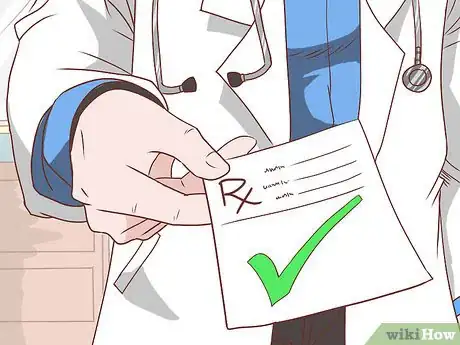
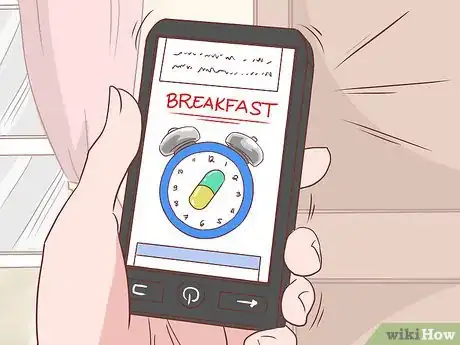
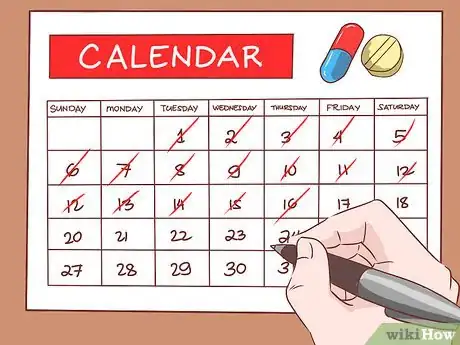



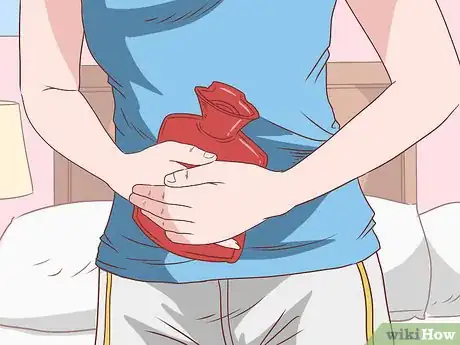
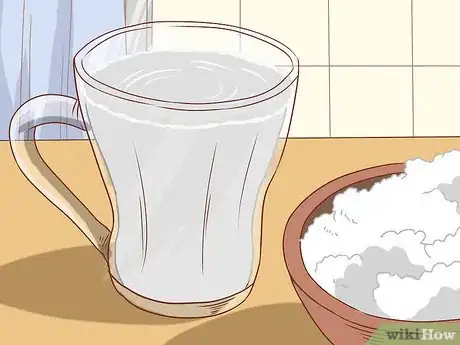


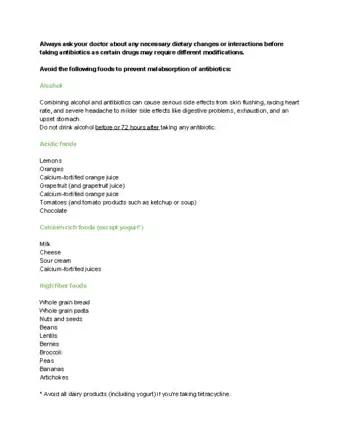


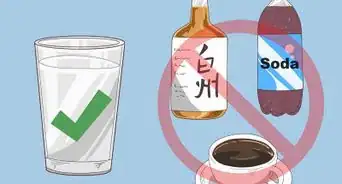






















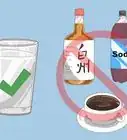





































Medical Disclaimer
The content of this article is not intended to be a substitute for professional medical advice, examination, diagnosis, or treatment. You should always contact your doctor or other qualified healthcare professional before starting, changing, or stopping any kind of health treatment.
Read More...